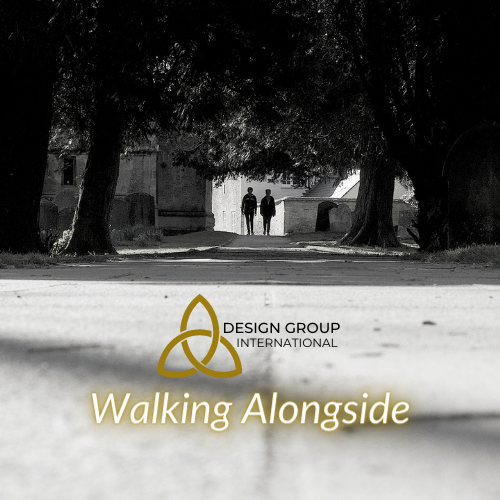Can’t you just tell me the answer?
As I was working alongside a client who was navigating a challenging predicament, I asked, “How can I help?” They were stuck and responded with a laugh, “can’t you just tell me the answer?” I too laughed and asked, “How might that help?”
They responded, “It’s easier for me and I won’t have to take responsibility when it doesn’t go well!” This leader was confronting a familiar and painful polarizing situation and wanted to work toward dialogue rather than having to assert authority or shut anyone down. We talked through ideas and questions that might help them move the parties toward deeper understanding of one another’s opinion without the detractor of having a winner or loser. Whether this is a well-planned mediation, a quick conversation or a room full of frustrated employees, customers, or parents, people want to be heard and seen for what they believe. And, with an increase in polarization, the art of public discourse is waning.
With this Client, we started with going back to the basics of what do both “sides” have in common as a starting point. How can we begin with agreement and build relationship through active listening, reflecting what they are hearing and double check for understanding. The process of active listening, reflecting and revealing what we may or may not know about the other is a way to learn about ourselves and those with whom we may be in conflict. If we launch right into telling why one side is right and the other side is wrong people get defensive and, we don’t hear the story behind the argument. If we don’t know the basis of what we are being told, how can we even begin to learn about how someone reached their conclusions?
In his most recent blog, my colleague and Design Group International's CEO, Lon Swartzentruber makes reference to Edgar and Peter Schein’s book, Humble Inquiry as he unpacks a sense of “withness” as a Process Consultant’s partnering with our Clients as “our posture of listening, our partnership of helping, and our service of learning while we walk with Clients.” Through Humble Inquiry we are asking our Clients, and in turn, they are demonstrating how to learn from a stance of curiosity and asking questions. In the book, Navigating Polarities by Brian Emerson and Kelly Lewis, the authors are demonstrating “both and thinking to lead transformation.” The similarities in the approaches derive from two parties with differing opinions and, perhaps, afraid to question or learn their opinion is “wrong”. I believe in Lon’s Society for Process Consulting blog titled "withness", he reflects the humility and sense of being with your Client as an attitude and a posture coined as Humble Inquiry. In Navigating Polarities the authors are mapping out differences and helping clients seek a third way to bring the parties toward understand of the other’s position and moving toward a solution. These approaches are not mutually exclusive and can serve as a grounding exercise toward coming together, learning together and transforming together.
How did my Client work through their challenge? By taking a stance of curiosity and humility in asking what are the elements of why this is important to you? By letting both parties share what matters to them and having them see what values they both shared. The mission of the organization and its people were shared values they could both agree upon. Going to the next level, my Client provided the space to say why and reflected back what he had heard. Both parties immediately softened as they saw there were agreements about what was important to each. Next, the leader asked about the differences he had heard and asked what could either side live with or without. Given what we all agree is important, what isn’t important? This space opened up a conversation where there had been a sentiment of mistrust which, it turned out was due to a lack of information. There were not two sides, there was a void and people chose to fill it with their own feelings and storylines. Once the void was made known, information was shared and there was an opportunity to come together.
The takeaway was a lack of communication in a context of fear in asking for clarity. Each side learned a new way to be curious with one another and ask rather than tell.
/Lukie%20Wells.png?width=85&height=118&name=Lukie%20Wells.png)
![]()
Process Consultant and Senior Design Partner
Tags:
process consulting, organizational wisdom, leadership wisdom, society for process consulting, listening, helping, learning, listening actively, Walking Alongside Blog, GatheringMay 20, 2024

Comments